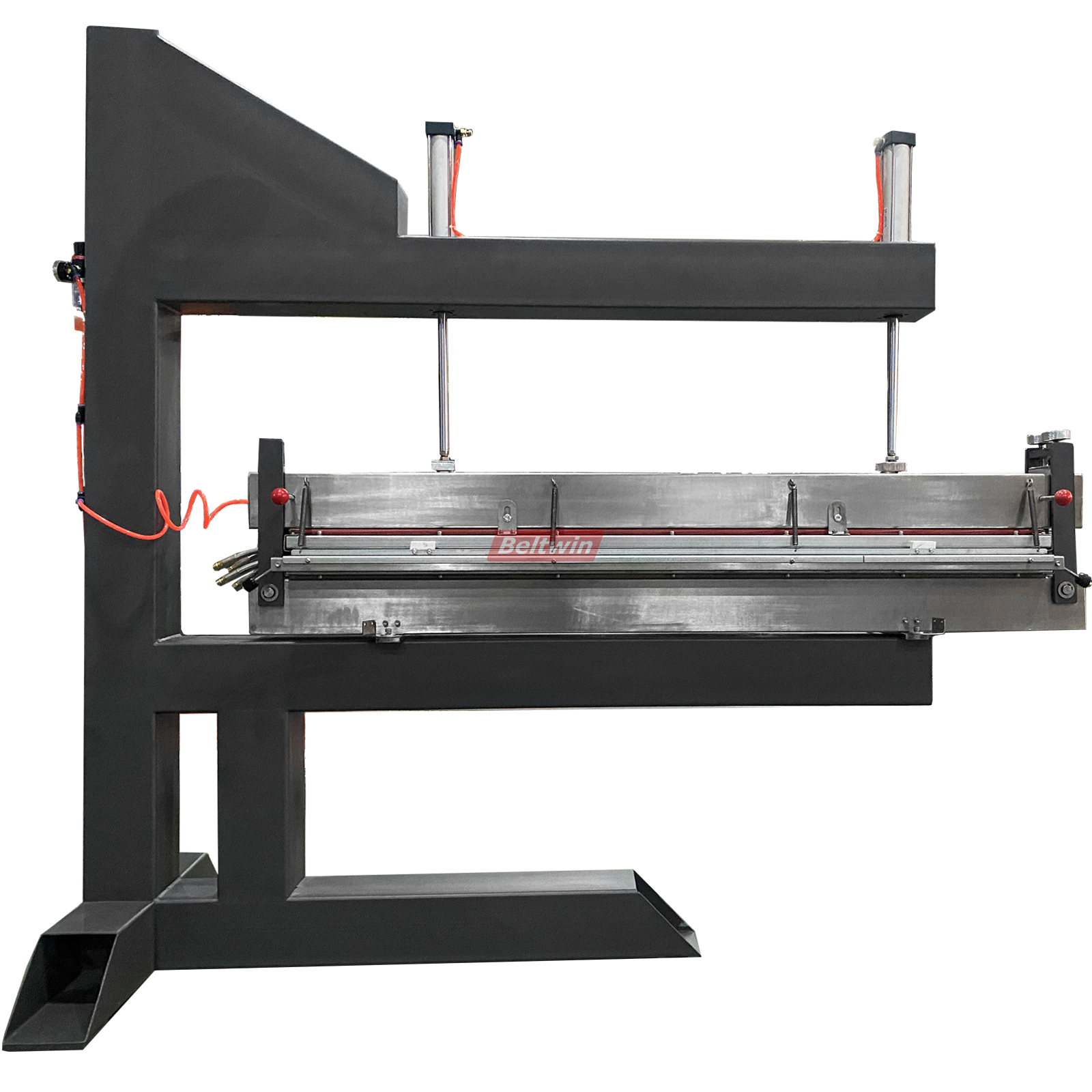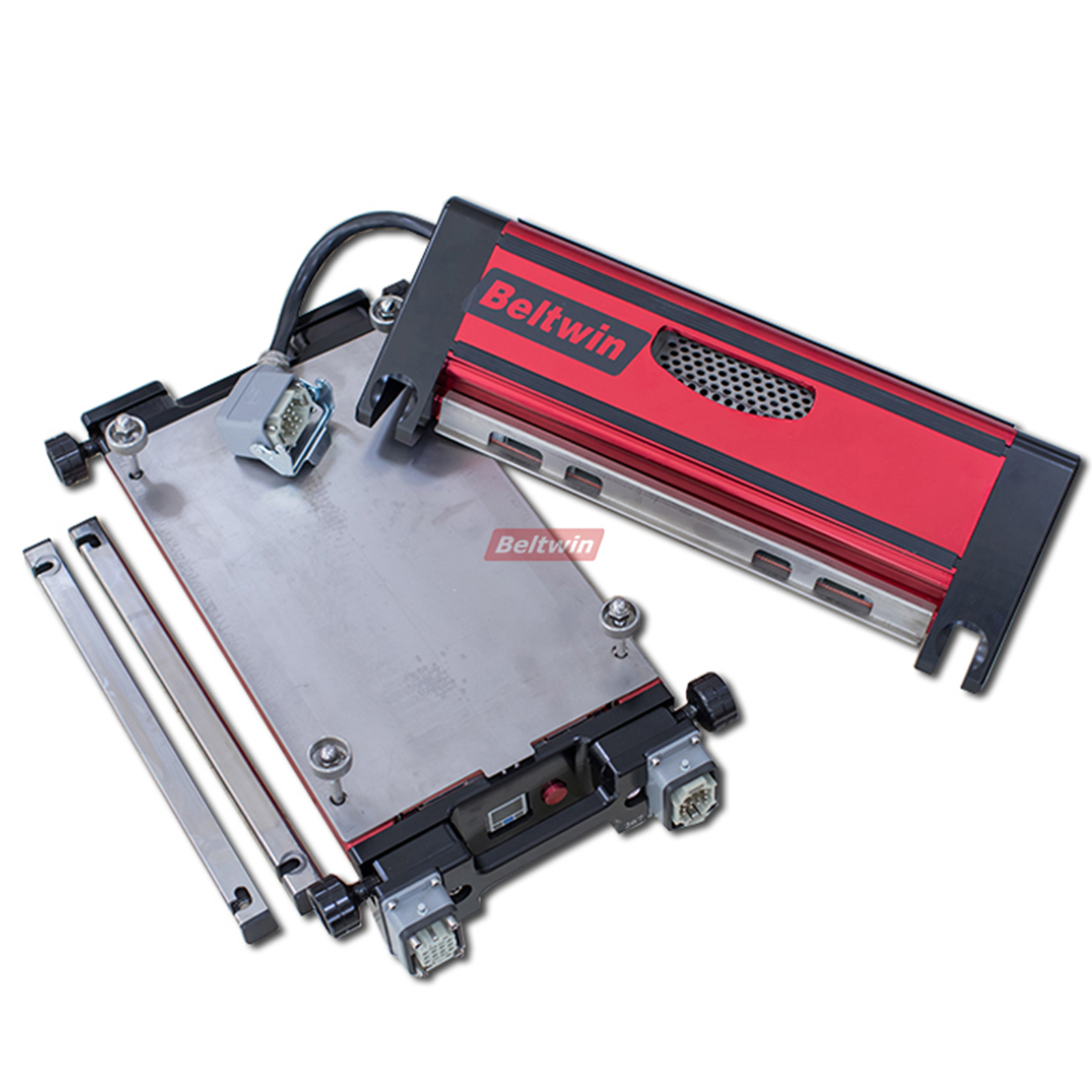Which is a better option: a water-cooling splice press or an air-cooling splice press?
The choice between water cooling and air cooling for PVC and PU belt splice presses depends on several factors, including the specific application, convenience, cost, and the materials being used. Both methods have their advantages and disadvantages. Here's a comparison to help you decide:
**Water Cooling press in Beltwin**
Advantages:
1. Faster Cooling: Water cooling tends to cool down the splicing area more rapidly compared to air cooling. This can lead to quicker overall splicing times.
2. Uniform Cooling: Water can provide more uniform cooling across the splice area, reducing the risk of overheating or uneven cooling.
3. Effective for Thick Belts: Water cooling is particularly effective for thicker belts or situations where a quick cooling rate is essential.
Disadvantages:
1. Water Availability: Water cooling requires a water source and a drainage system to manage the water runoff. This might not be feasible in all locations or environments.
2. Cleanup and Maintenance: Water cooling can lead to wet and messy work areas, requiring additional cleanup after splicing. The equipment also needs regular maintenance to prevent scale buildup.
3. Corrosion Risk: There's a potential risk of corrosion on the equipment over time due to water exposure.
**Air Cooling press in Beltwin:**
Advantages:
1. Simplicity: Air cooling setups are generally simpler, as they don't require a water supply or drainage system. This can be advantageous in areas where water availability is limited.
2. Portability: Air cooling systems are often more portable and easier to set up, making them suitable for mobile or remote repair setups.
3. No Corrosion Concerns: Since there's no water involved, there's no risk of corrosion on equipment due to water exposure.
Disadvantages:
Less Effective for Thick Belts: For thicker belts, air cooling might not be as efficient as water cooling in rapidly reducing the temperature.
Ultimately, the "better" option depends on your specific needs and constraints. If water availability and cleanup aren't issues, and if rapid and uniform cooling is essential, water cooling could be the preferred choice. On the other hand, if simplicity, portability, and avoiding water-related concerns are more important, air cooling might be the better option.
Consider factors such as the types of belts you're working with, your operational environment, available resources, and the expertise of your technicians when making your decision. It is also recommended to seek advice from Beltwin, as they have professional teams that can offer the best solutions based on your specific requirements.
 Русский
Русский Deutsch
Deutsch Français
Français Español
Español Português
Português
